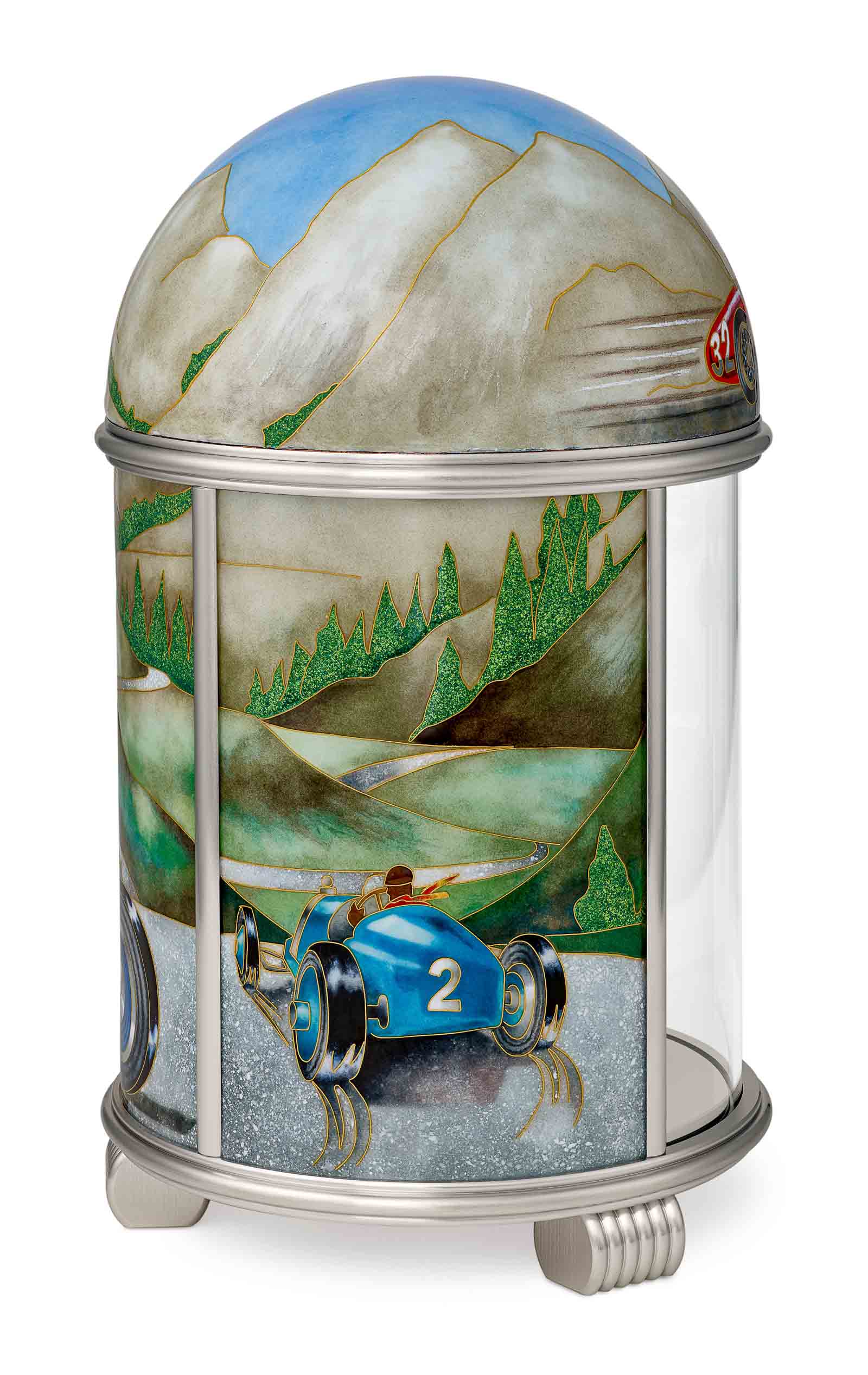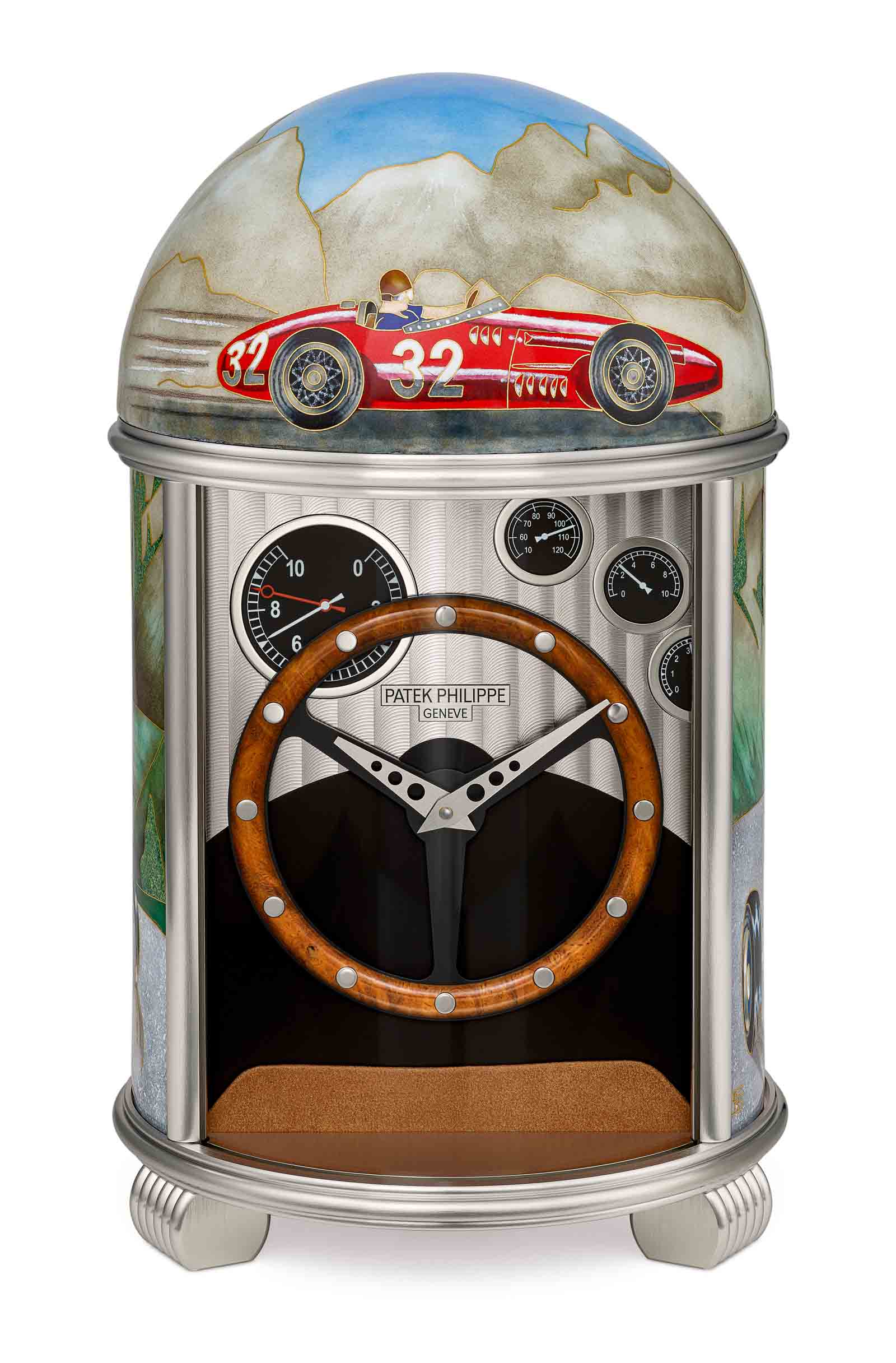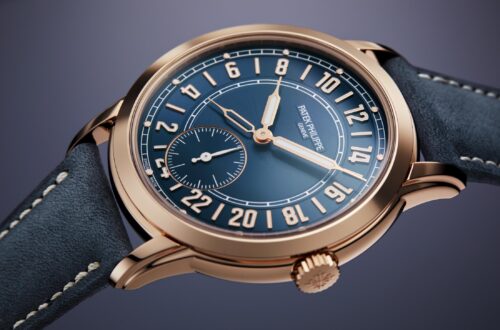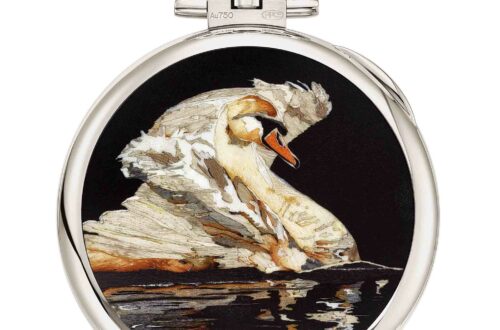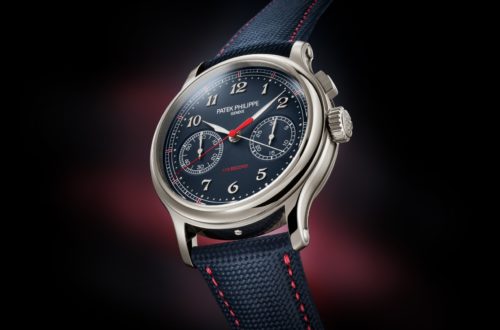Patek Philippe – 2023 Rare Handcrafts Collection
Hello everyone,
Patek Philippe has unveiled its 2023 Rare handcrafts collection. Each year, next to the more visible regular collection novelties, Patek presents a range of rare, sometimes unique, pieces in link with hand-made craftmanship. It has been a while since the brand has been involved in those highly skilled fields. We can of course recall the early 1950’s/1960’s enamel pocket and wrist watches or last decades pieces decorated from feather working, wood marquetry, painting crafts but in fact you can follow pieces decorated that way from the early origins of Patek in the 19th century.
These are pieces that are very difficult to come buy, even on pictures. Thus, next to the main collection article I did yesterday (here), I just wished to post the pictures from the press release in order that people who enjoy this side of watchmaking can view them as well.
Please note these are press pictures and I’ll post extracts of the press descriptions as well.
To be able to see them, you should know Patek Philippe will be presenting their 2023 Rare Handcrafts collection in Geneva with the 64 pieces (21 dome clocks, 3 table clocks, 11 pocket watches and 29 wristwatches). They will hold a dedicated exhibition, open to the public (you have to pre-register on the Patek website dedicated page, linked below), at their Geneva Salons from the 1st to the 15th of April 2023.
More here about the event: 2023 Rare Handcrafts exhibition on Patek’s website
And Patek’s main Rare Handcrafts page: here
Enjoy the show!
PS: you can also have a look at last year’s 2022 Rare Handcrafts Collection, here.
__________________________________________
Techniques used in the “Rare Handcrafts 2023” Collection
Hand engraving
The oldest form of decorative art linked to the embellishment of timepieces, hand engraving and its various techniques (line engraving, low relief etc.) adorn case backs, dials, hands, bezels and bows.
Grand Feu cloisonné enamel
This technique, which has long been used in watchmaking, creates motifs with luminous, enduring colors. The artisan shapes the contours of the motif with a fine gold wire and then fills the resulting “cloisons” or cells with translucent, opaque, semi-opaque or opalescent enamels.
Miniature painting on enamel
A grand Genevan specialty since the 17th century, this technique serves to create small pictures in tiny deft touches” using a minuscule brush and powdered enamels mixed with lavender oil, on a base layer of white enamel.
Paillonné enamel
This traditional technique consists of embedding small gold- or silver-leaf paillons (punched spangles) in translucent enamel so that they remain visible and illuminate the decoration.
Hand-executed guilloché work & flinqué enamel
In hand-executed guilloché work, ancient manually controlled machines are used to carve fine geometric patterns in a metal surface on which light seems to dance. When these shining patterns are coated with translucent enamel, the technique is referred to as flinqué enamel.
Champlevé enamel
This ancestral technique consists of hollowing out areas of a metal plate, and then filling these cavities with enamel by means of several firings.
Grisaille enamel au blanc de Limoges
In this technique of French origin, the oil-based white enamel known as “blanc de Limoges” is modeled using a tiny brush and a needle on a base of dark-colored enamel to create skillful monochromes.
Longwy enamel on faience
In this technique, for which the town of Longwy in northeastern France is renowned, the enameller lays out his design by drawing the characteristic black outline or “cerne”, and then fills the cells with colors using a brush and creating a slight relief.
Fauré enamel (relief enamel)
By this technique, which appeared in Limoges at the beginning of the 20th century, very finely ground enamel powder is mixed with a special glue and then applied and modeled in thick, compact layers using a spatula, to obtain relief patterns.
Wood micromarquetry
This extremely elaborate technique, introduced by Patek Philippe to decorate dials and case backs, is used to produce small pictures composed of several hundred tiny veneer parts, shaped from woods of different species, colors, and graining.
Gemsetting
Gemsetting with diamonds and other precious stones such as rubies lends an irresistible sparkle to the bezels of Calatrava wristwatches. The fully handcrafted pocket-watch stands in 18K gold are also set with a wide variety of precious gems in subtle, elegant shades.
A sample of the pieces presented this year
992/177J-001 “View of Mount Kilimanjaro” / Pocket watch with back in miniature painting on enamel and dial in flinqué enamel
In the Tanzanian savannah
The decoration on the back of this unique piece gives center stage to the famous Mount Kilimanjaro (5,891 m), with a herd of elephants passing in the foreground.
To recreate this African landscape, Patek Philippe called on the highly complex technique of miniature painting on enamel, a Genevan specialty. The artist worked with a tiny brush, building up his picture in small deft touches with skillful combinations of 18 base colors — a process requiring 32 firings at temperatures ranging from 800°C to 830°C. He then protected the scene and intensified its brilliance according to the Geneva method, with several layers of flux, a transparent enamel. The yellow-gold dial, presenting applied Breguet numerals and leaf-shaped hands, also in yellow gold, was hand-guilloched with a spiral motif and coated in translucent blue enamel (flinqué enamel). A faceted dark-blue sapphire (0.38 ct) decorates the crown.
This pocket watch is accompanied by a yellow-gold handcrafted stand in the shape of an acacia, set with a faceted dark-blue sapphire (0.4 ct), on a base of Polish fire stone.
It houses the caliber 17’’’ LEP PS manually wound movement with small seconds.
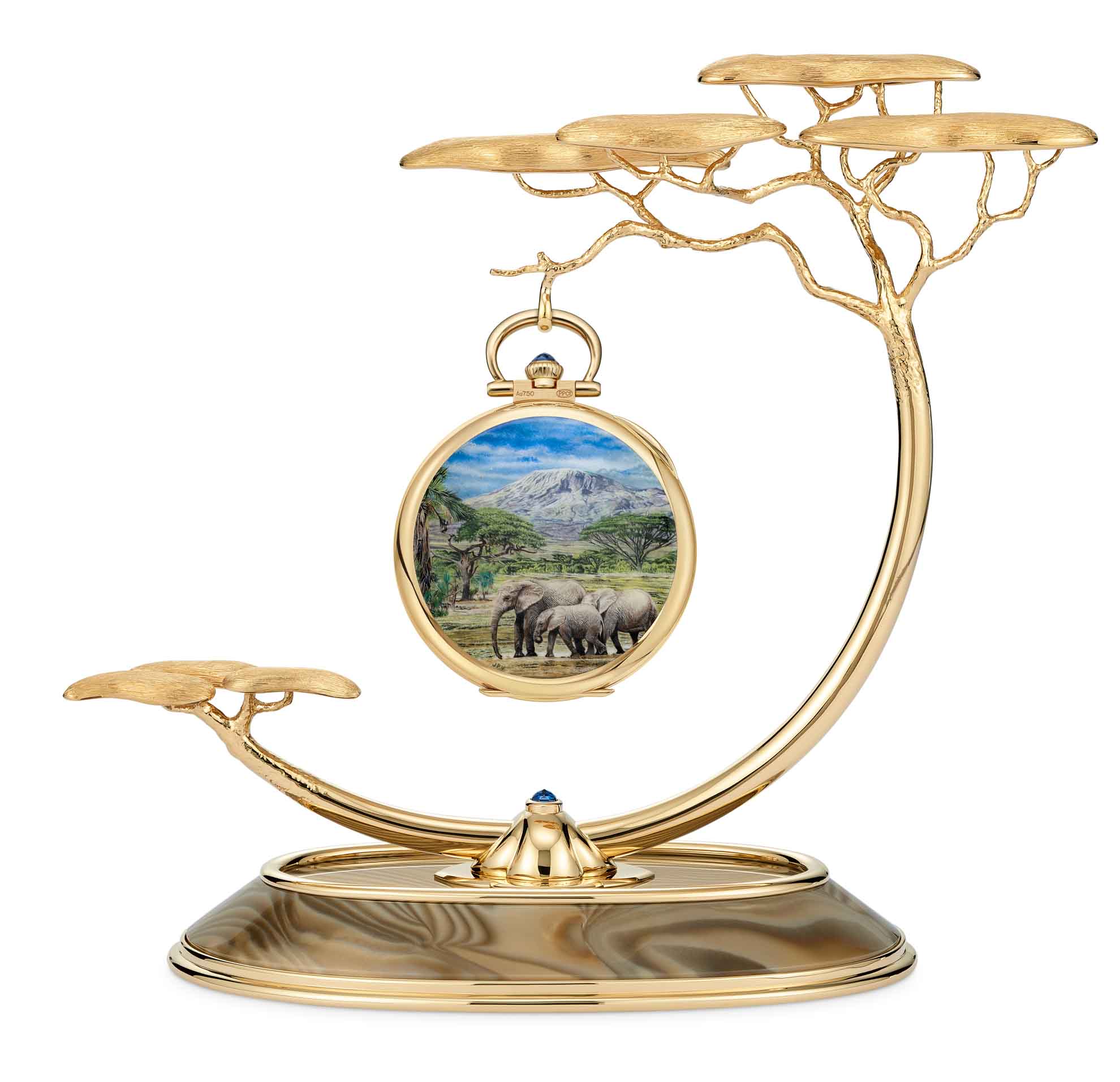

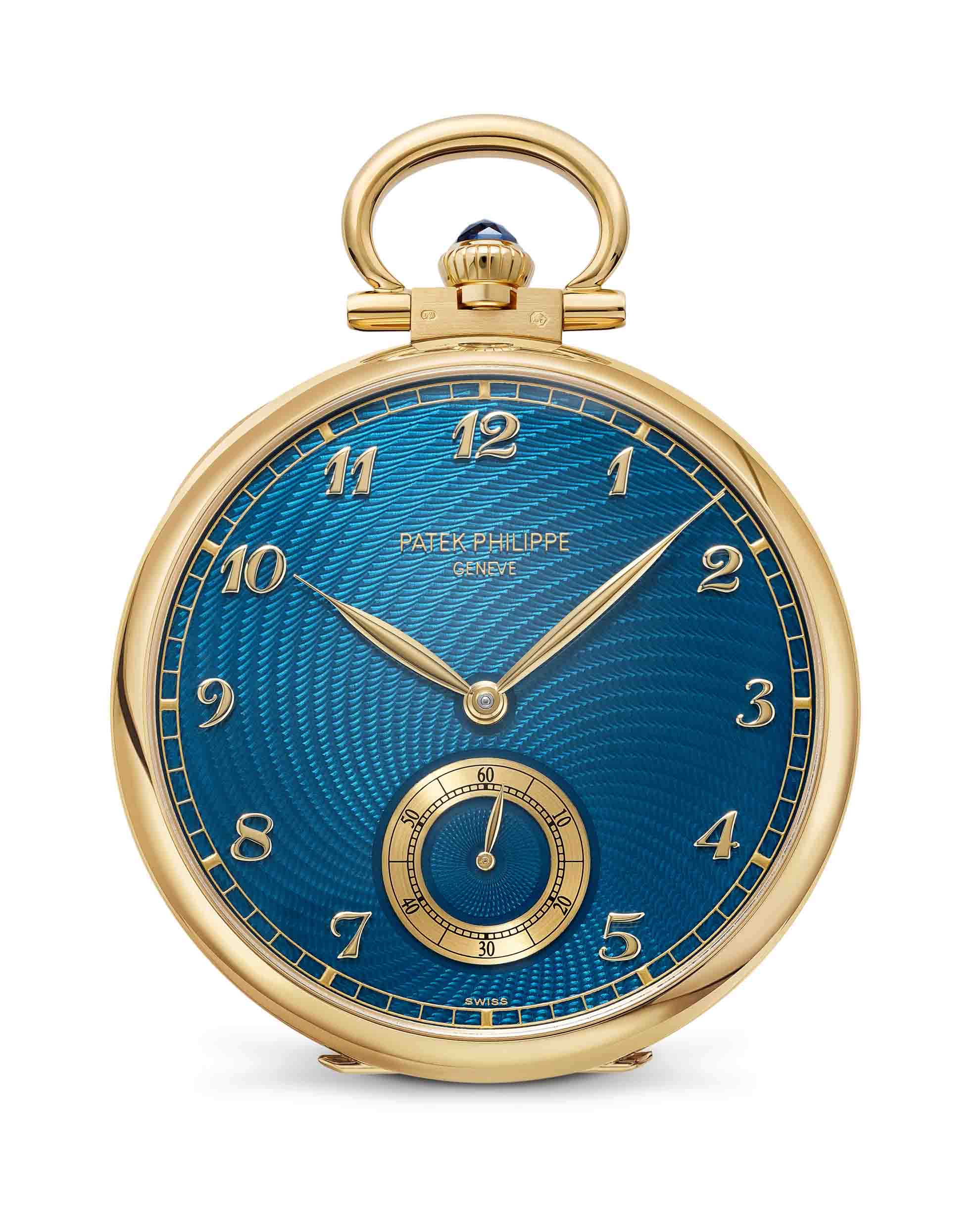
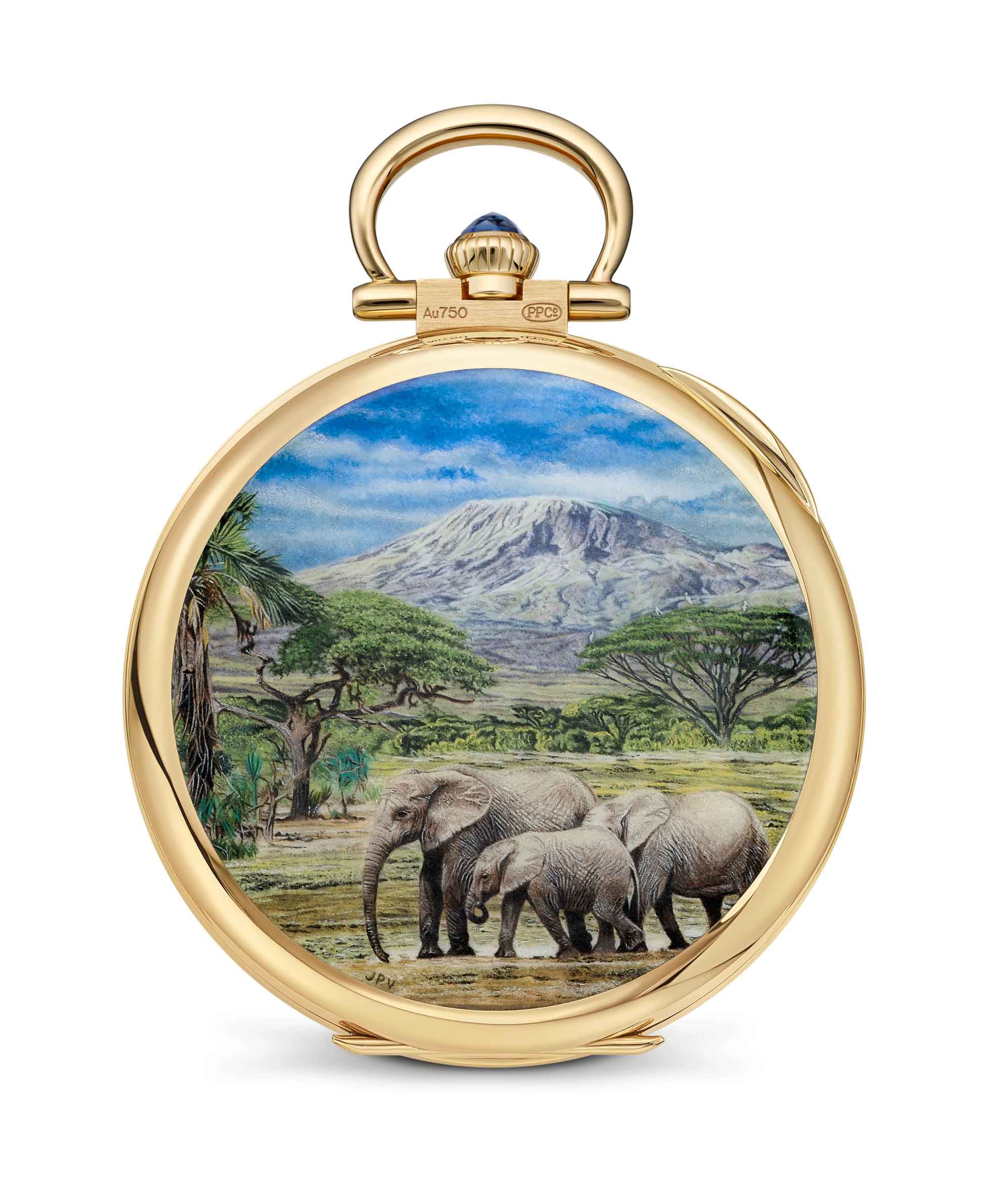
995/119G-001 “Japanese Night”/ Pocket watch with hand engraving and miniature painting on enamel
A garden by moonlight
This unique piece recreates all the poetry of a night in a Japanese garden by associating two rare ancestral handcrafts.
The white-gold case back was hand-engraved in low relief with foliate motifs. Blue translucent enamel evokes a star-studded sky, enriched with a full moon and fireflies in miniature painting on enamel — a creation requiring 20 firings at a temperature of 800°C. The moonlit brook shimmers in mother-of-pearl with delicate hand-engraving.
The white-gold dial, presenting applied Breguet numerals and leaf-shaped hands, also in white gold, is adorned with a miniature painting on enamel of branches against a night sky, calling for 25 firings at some 800°C. A blue sapphire cabochon (0.36 ct) decorates the crown.
This pocket watch is accompanied by a white-gold handcrafted stand, its extremities sparkling with 60 blue sapphires (~1.2 ct), resting on a foot set with a blue sapphire cabochon (0.33 ct) above a sodalite base.
It houses a caliber 17’’’ LEP PS manually wound movement with small seconds.
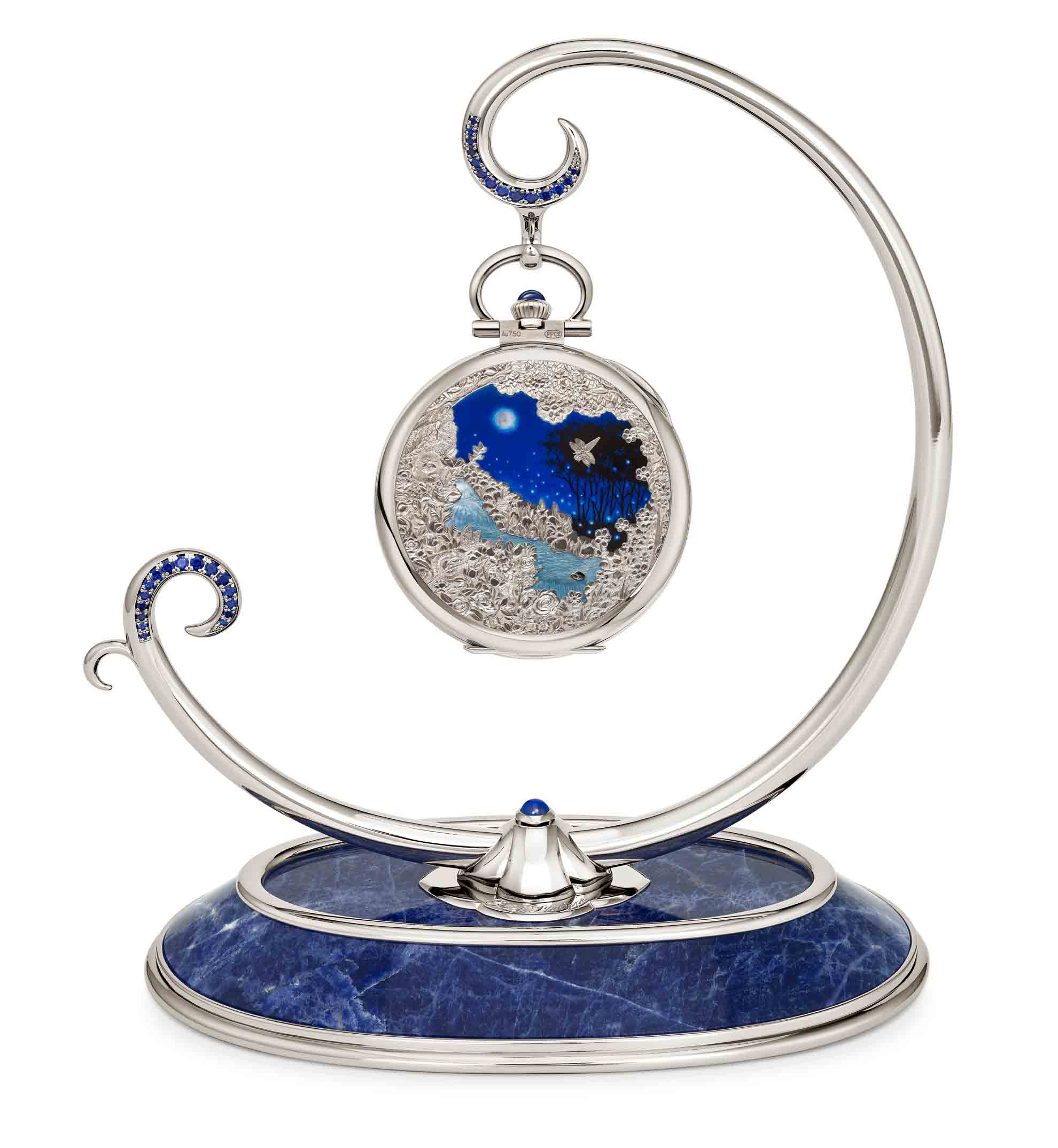
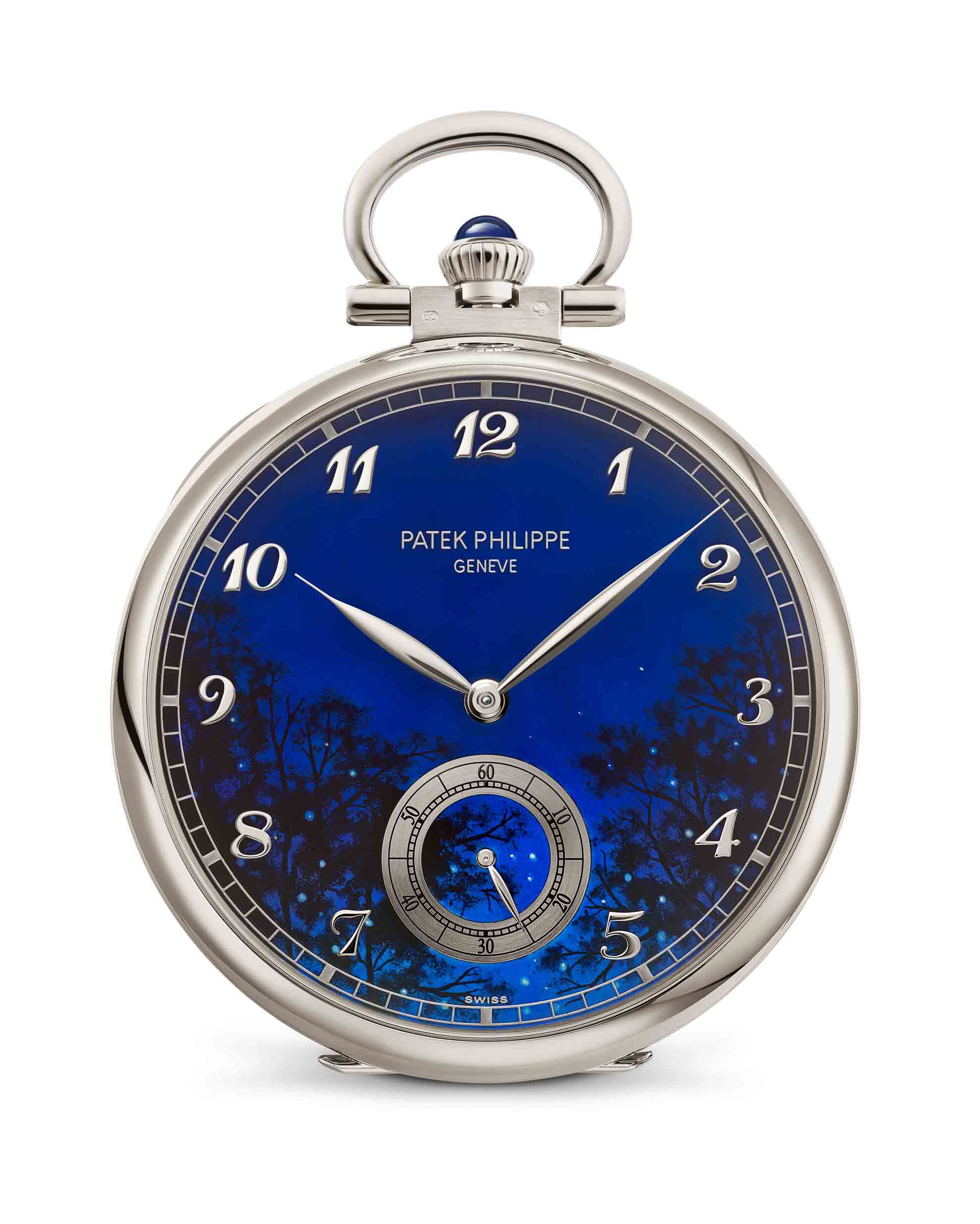
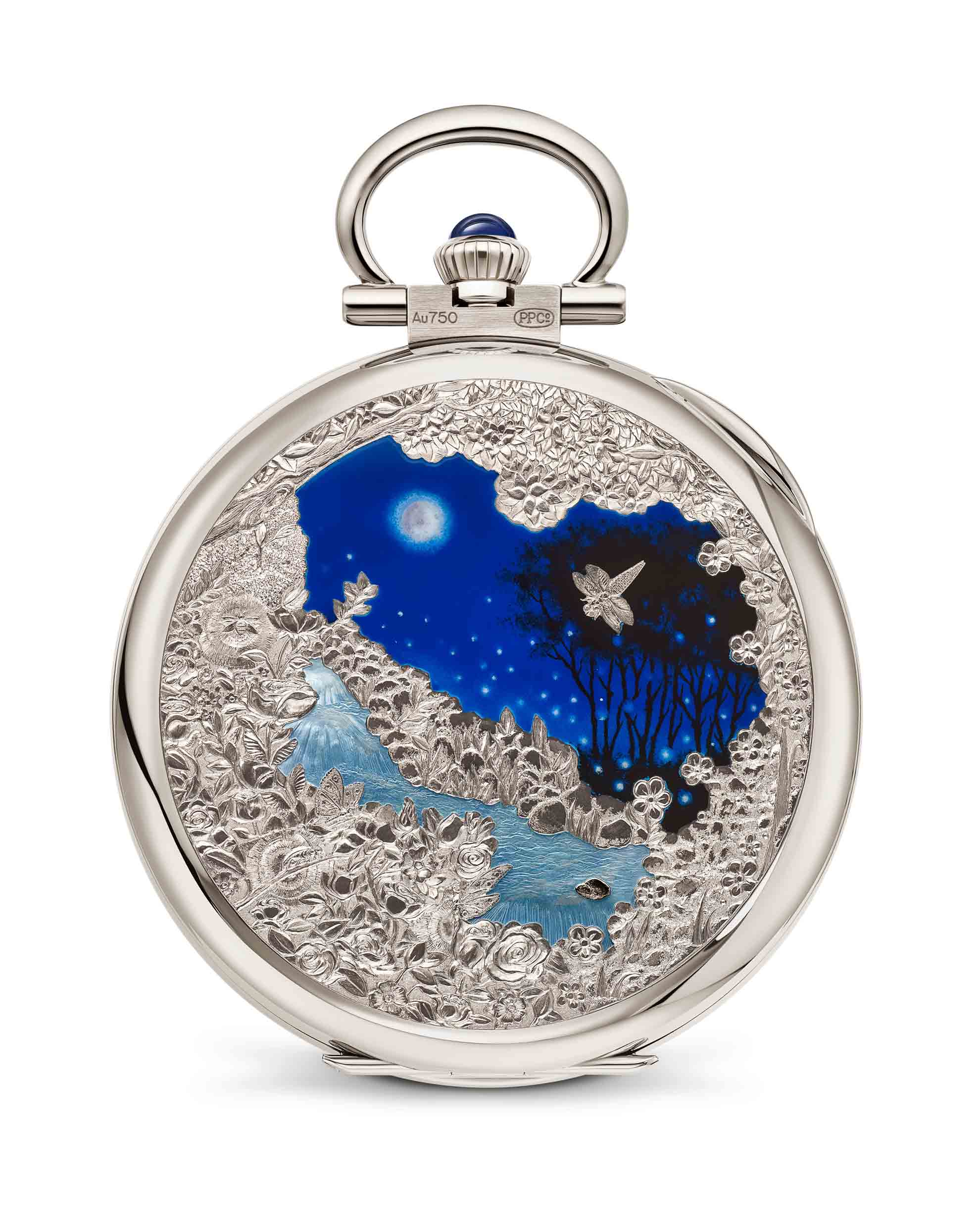
995/137J-001 “Leopard” / Pocket watch with wood marquetry, hand engraving and champlevé enamel
As nature intended
An extraordinarily lifelike portrait of a leopard adorns this unique piece uniting wood marquetry, hand-engraving and champlevé enamel.
To reproduce this big cat emerging out of the darkness on the case back, the marquetry maker cut out and assembled 363 tiny veneer parts and 50 inlays, together spanning a palette of 21 species of wood of different colors, textures and veining. The border of the case back, the bezel on the dial side and the bow are embellished with a hand-engraved pattern of tropical foliage inset with black enamel (champlevé enamel).
The dial in black-tinted tulipwood presents applied Breguet numerals and leaf-shaped hands, all in yellow gold. A faceted yellow sapphire (0.32 ct) decorates the crown.
This pocket watch is accompanied by a handcrafted stand in yellow gold, the arch and its ornaments representing liana. It rests on a foot set with a faceted yellow sapphire (0.36 ct), on a base in black ebony from the Congo Basin.
It houses the caliber 17’’’ LEP PS manually wound movement with small seconds.
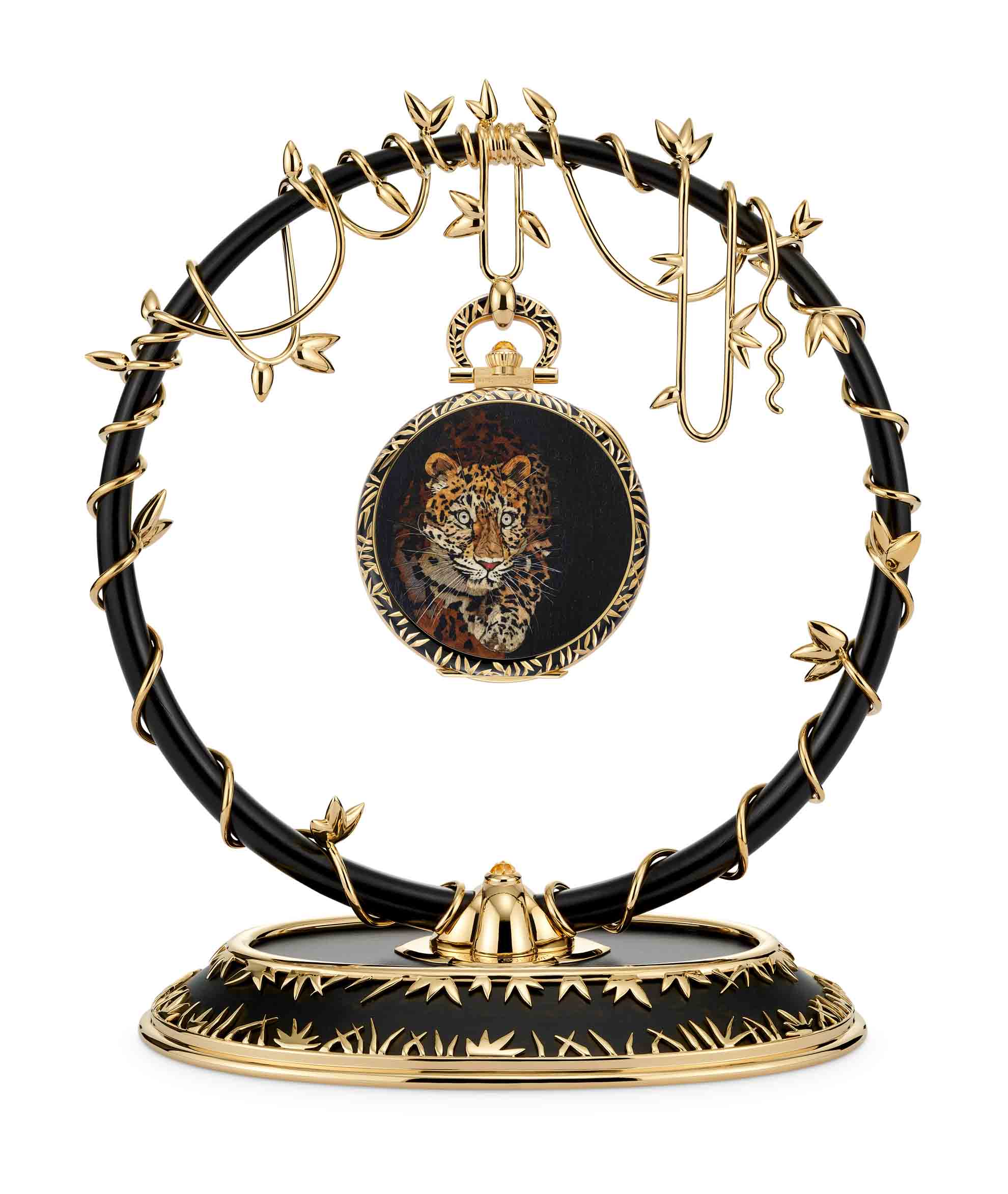

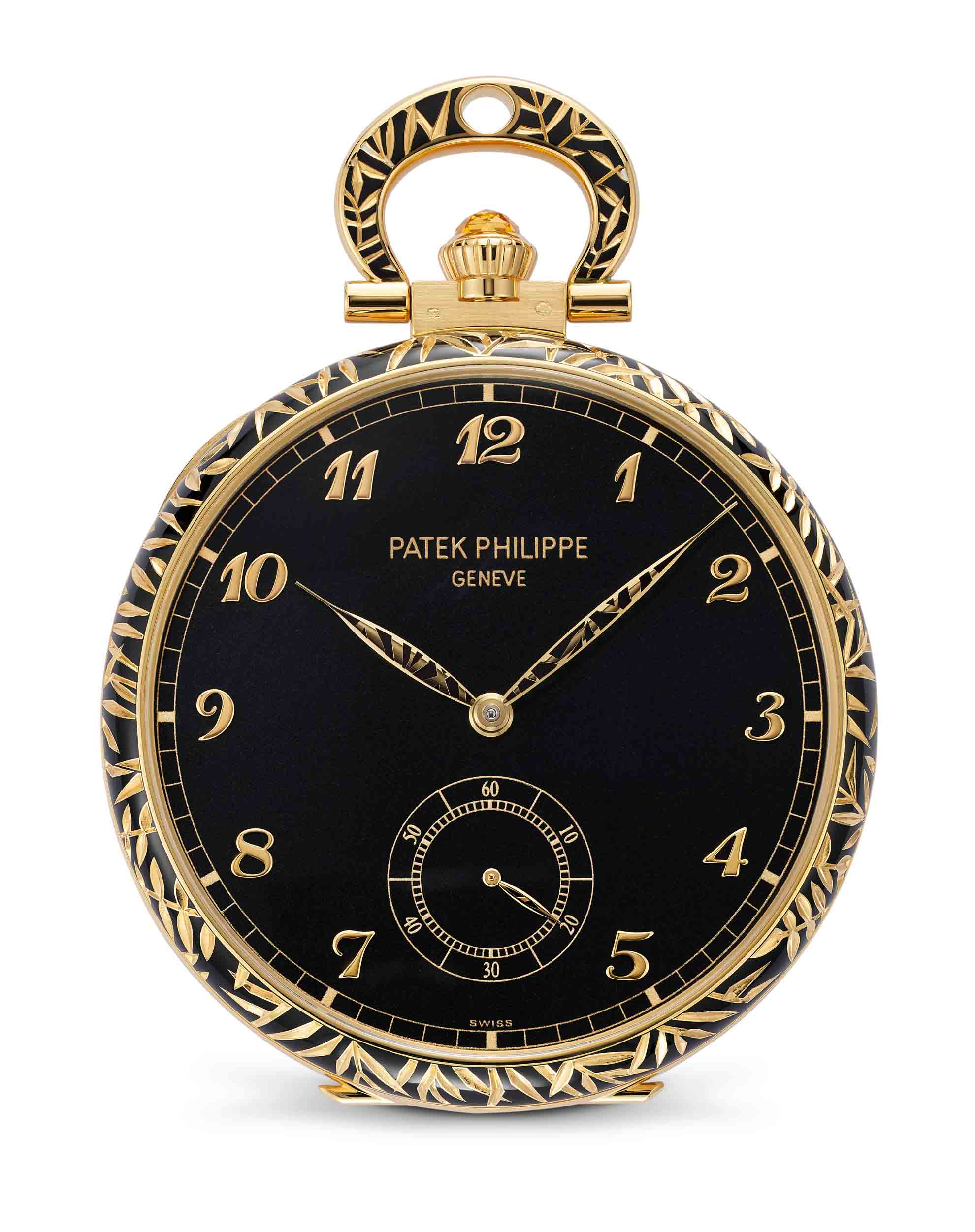
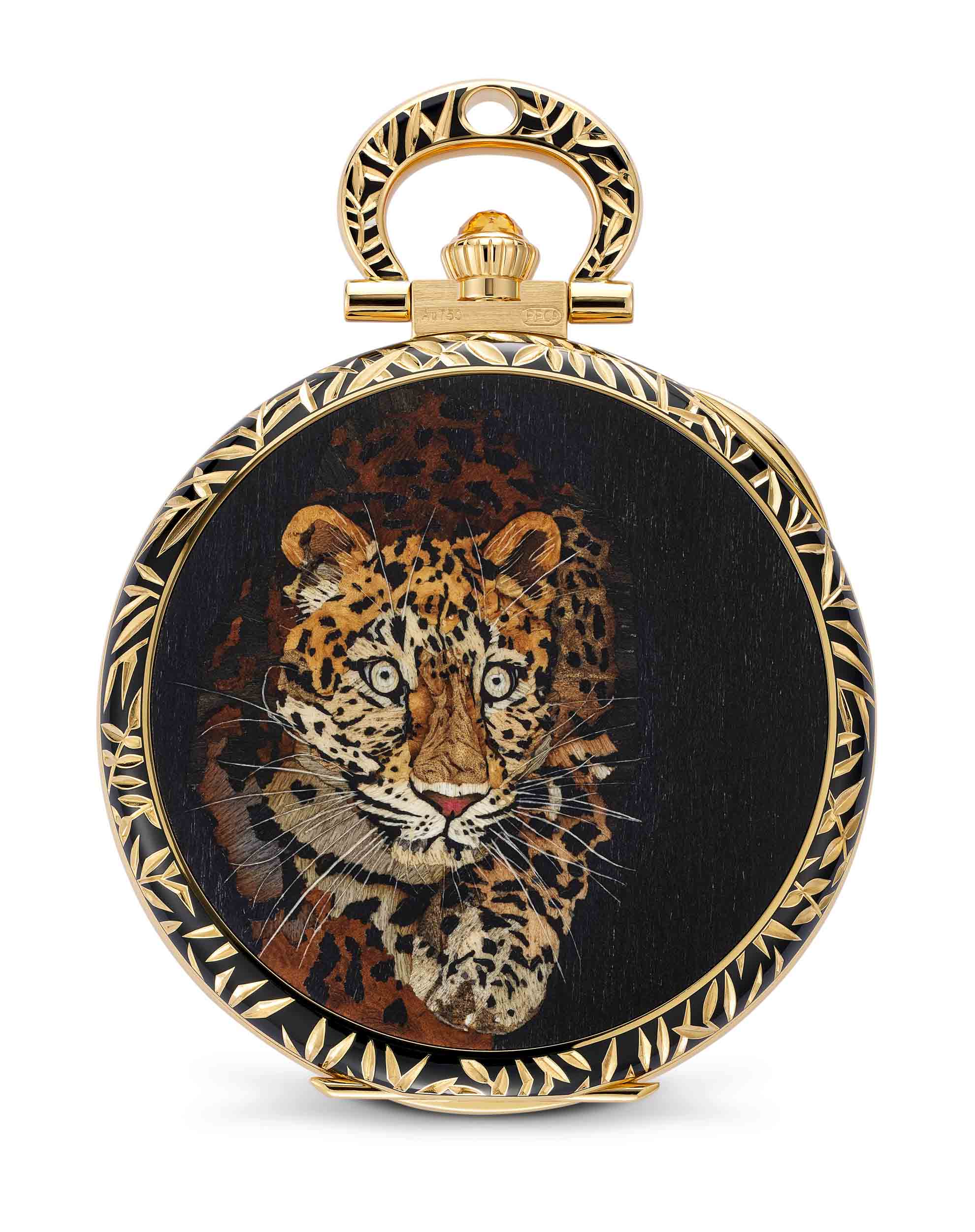
5077/100R-064 “Manta Rays on a Sand-Colored Ground”/ Calatrava wristwatch with dial in cloisonné enamel over hand-engraving
An aquatic ballet
This limited edition of ten watches in Grand Feu cloisonné enamel gives center stage to the manta rays’ streamlined shape and graceful gliding motion in an aerial view with a shadow effect accentuating the depth of the sea.
The enameller began by delicately engraving the yellow-gold dial by hand with small undulating lines that will create an impression of ripples in sand.
He then outlined the rays, using about 25.5 cm of gold wire (~0.22 g) measuring 0.10 x 0.45 mm in cross-section, before bringing his picture to life with 13 enamel colors: opaque for the rays and translucent for the background, allowing the underlying relief engraving to shine through. Each dial required from 6 to 8 firings at temperatures approaching 820°C.
The bezel and lugs are set with 112 brilliant-cut Top Wesselton Pure diamonds (~0.87 ct) and the prong buckle sparkles with 29 diamonds (~0.24 ct).
This watch is endowed with a caliber 240 ultra-thin self-winding movement, which may be admired through a sapphire crystal case back.
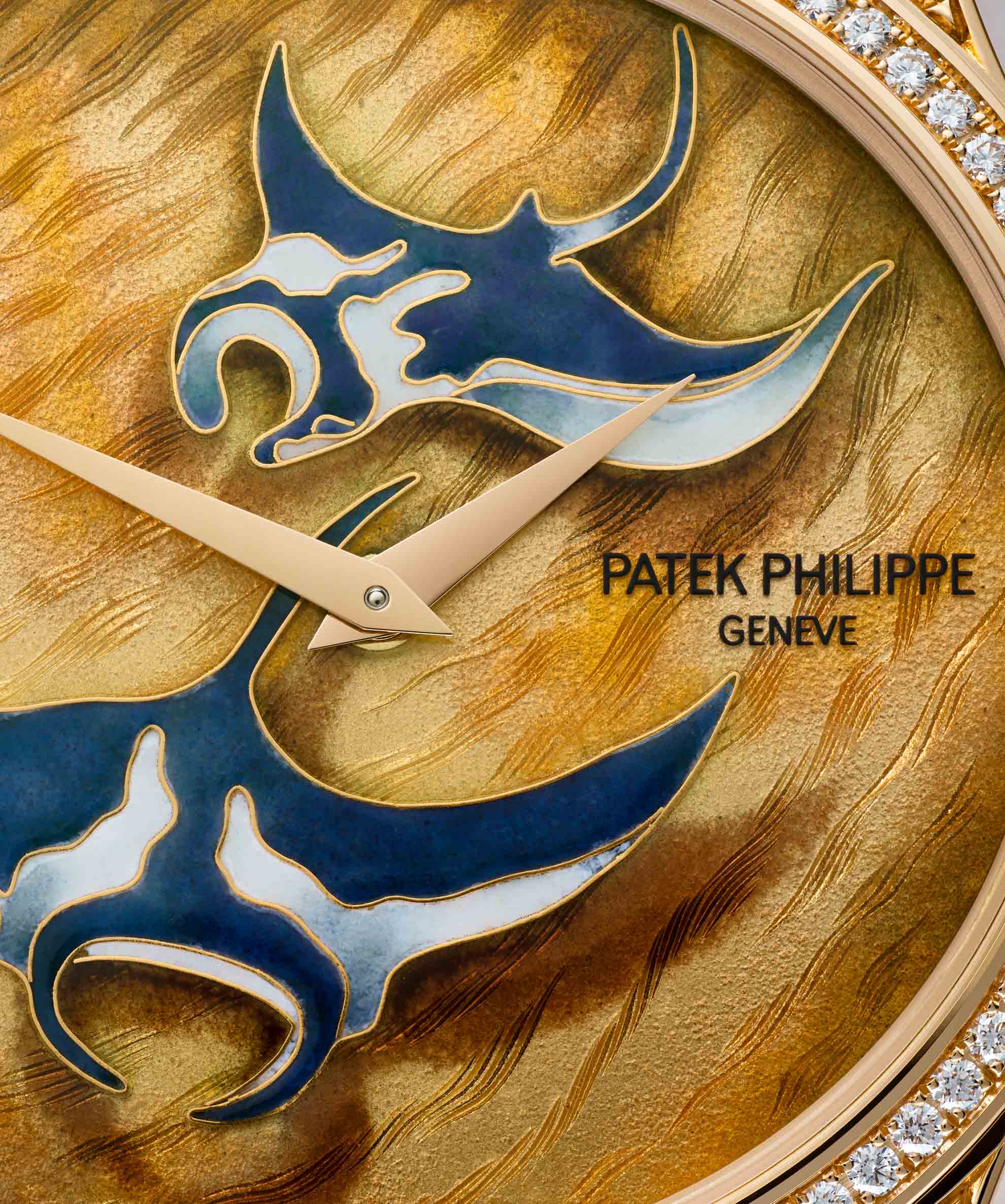
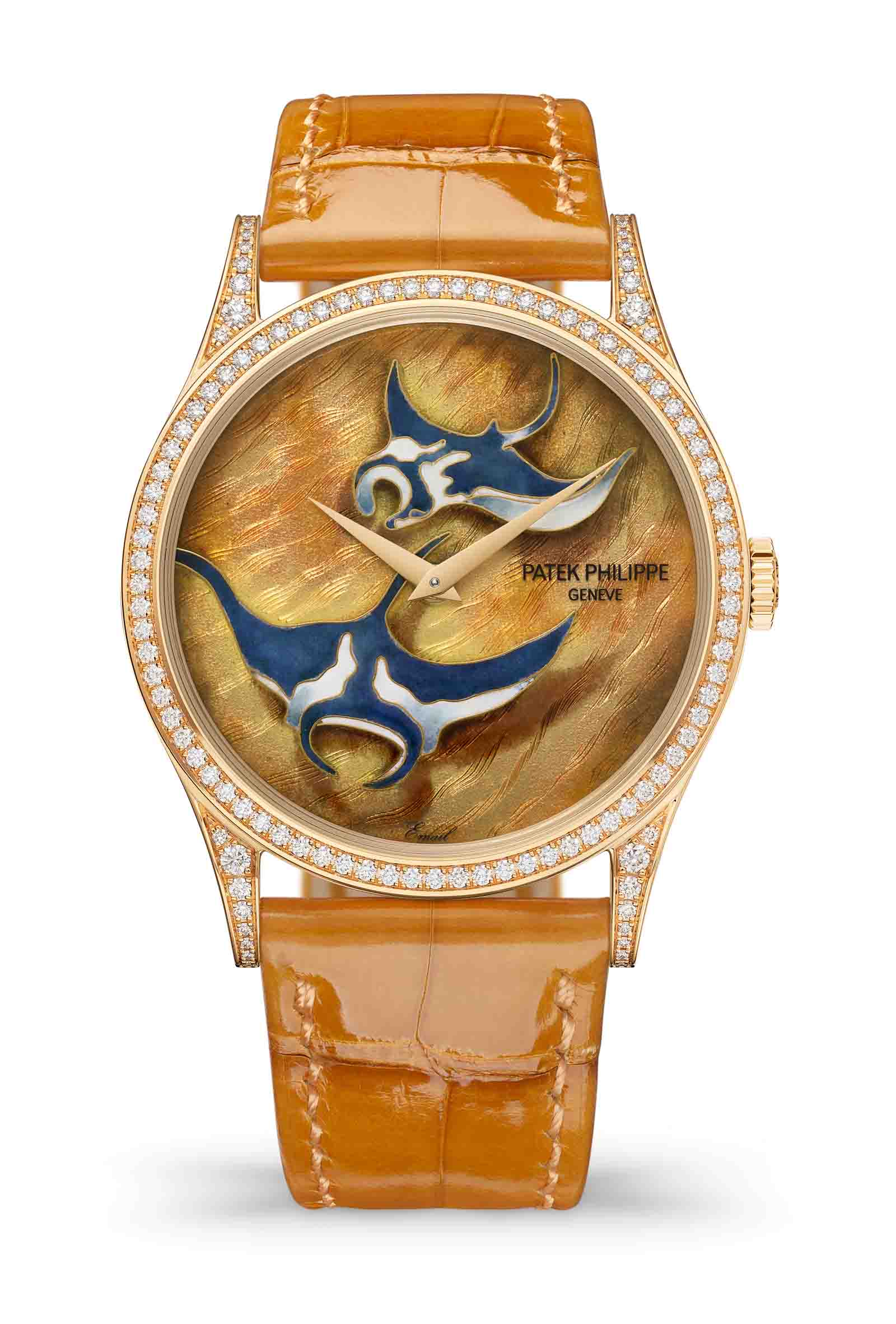
5189G-001 “1948 Nations Grand Prix” / Calatrava wristwatch with dial in cloisonné and paillonné enamel enriched with miniature painting on enamel
A great Genevan competition
This limited edition of ten watches shines a spotlight on the famous Nations Grand Prix, held in Geneva from 1946 to 1950. It does so by uniting several rare handcrafts.
The racing car portrayed in Grand Feu cloisonné enamel called for 40 cm of gold wire (0.32 g) measuring 0.10 x 0.45 mm in cross-section and 17 enamel colors, mainly translucent, but with some opalescent or opaque. Its race number was enriched with silver leaf embedded beneath the translucent enamel (paillonné enamel). In the background, the view of Geneva with the emblematic Jet d’eau fountain is depicted in miniature painting on enamel. Each dial required from 12 to 13 firings at a temperature of approximately 820°C. The pierced watch hands and strap recall racing drivers’ gloves.
A Clous de Paris or hobnail motif adorns the bezel. The white-gold case is endowed with a sapphire crystal case back protected by a hinged dust cover affording a private view of the caliber 240 ultra-thin self-winding movement.
The dust cover bears the engraved inscription “Grand Prix des Nations — 1948”.
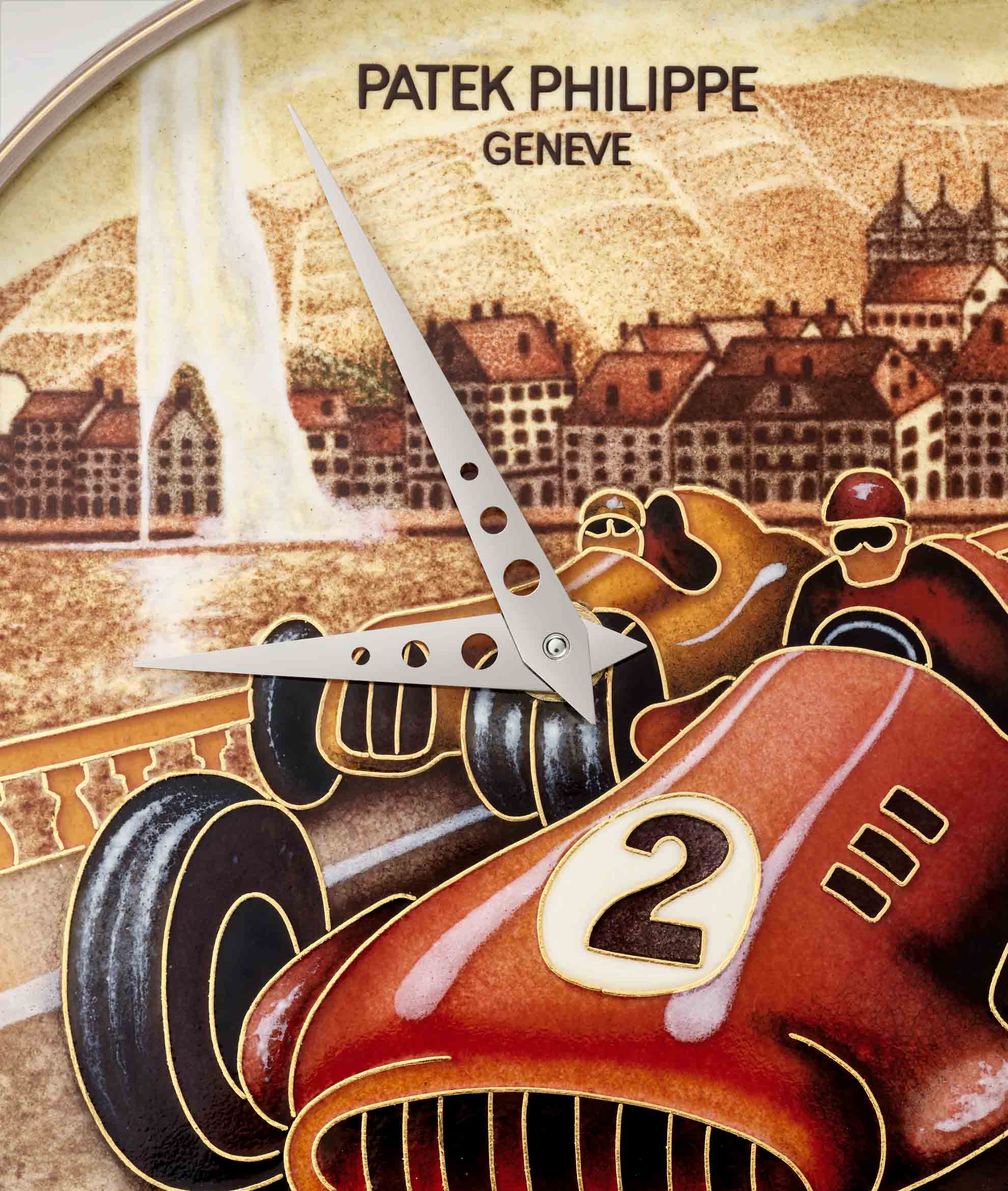
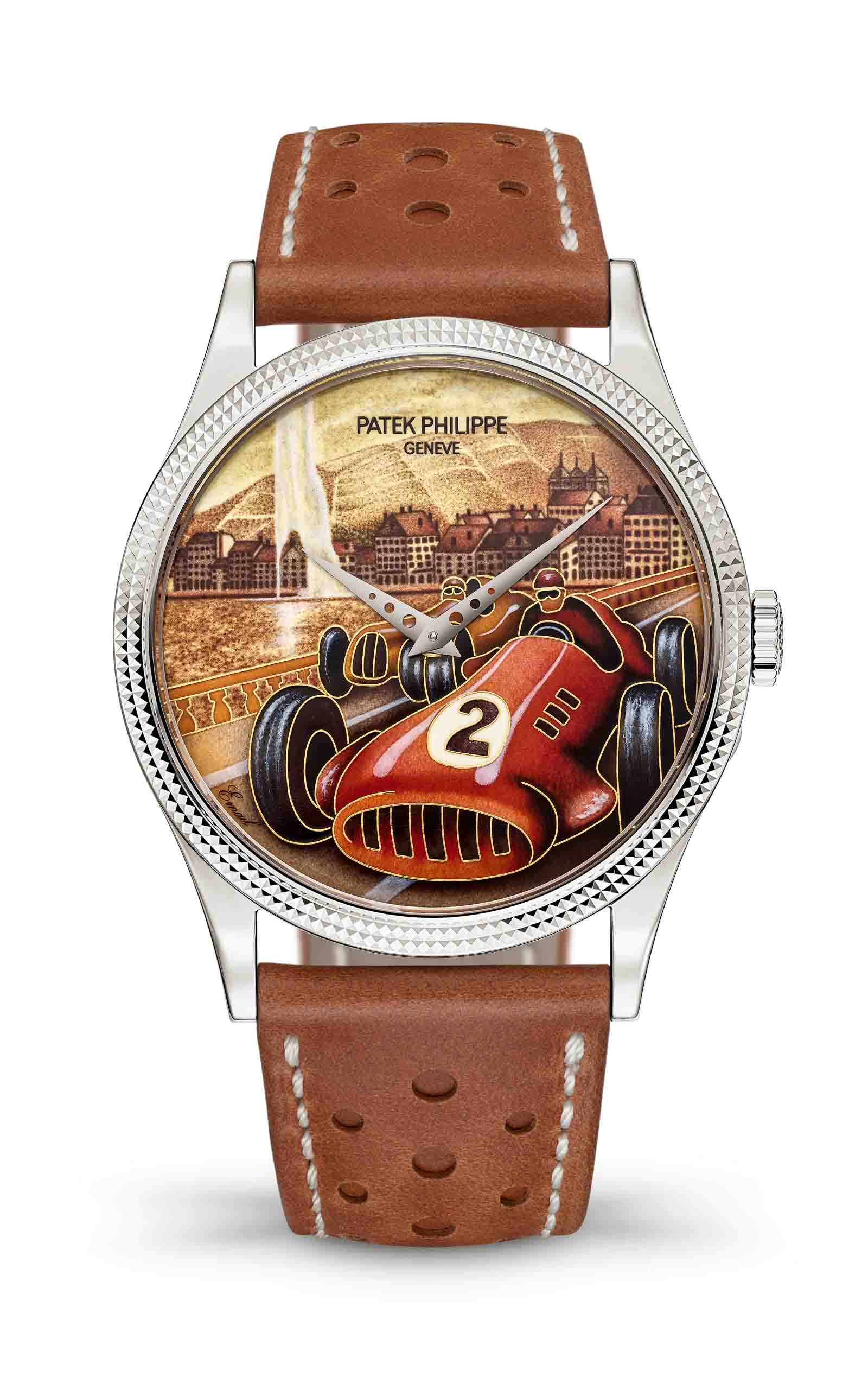
5189G-011 “1956 Alpine Rally” / Calatrava wristwatch with dial in cloisonné and paillonné enamel enriched with miniature painting on enamel
Grueling climbs and descents
This limited edition of ten watches brings back to life the legendary Alpine Rally, which became one of the motoring world’s most prestigious international events from 1950 onwards.
The racing cars in the foreground were rendered in Grand Feu cloisonné enamel using about 55 cm of gold wire (~0.44 g) measuring 0.10 x 0.45 mm in cross-section and 16 enamel colors, mainly translucent but with some opalescent or opaque. Silver leaf, embedded beneath the translucent enamel (paillonné enamel) illuminates the race number on the leading car. The strikingly realistic alpine landscape in the background was created entirely in miniature painting on enamel. Each dial required an average of 12 firings at a temperature of approximately 820°C. The pierced watch hands and strap recall racing drivers’ gloves.
A Clous de Paris or hobnail motif adorns the bezel. The white-gold case is endowed with a sapphire crystal case back protected by a hinged dust cover affording a private view of the caliber 240 ultra-thin self-winding movement.
The dust cover bears the engraved inscription “Rallye des Alpes — 1956”.
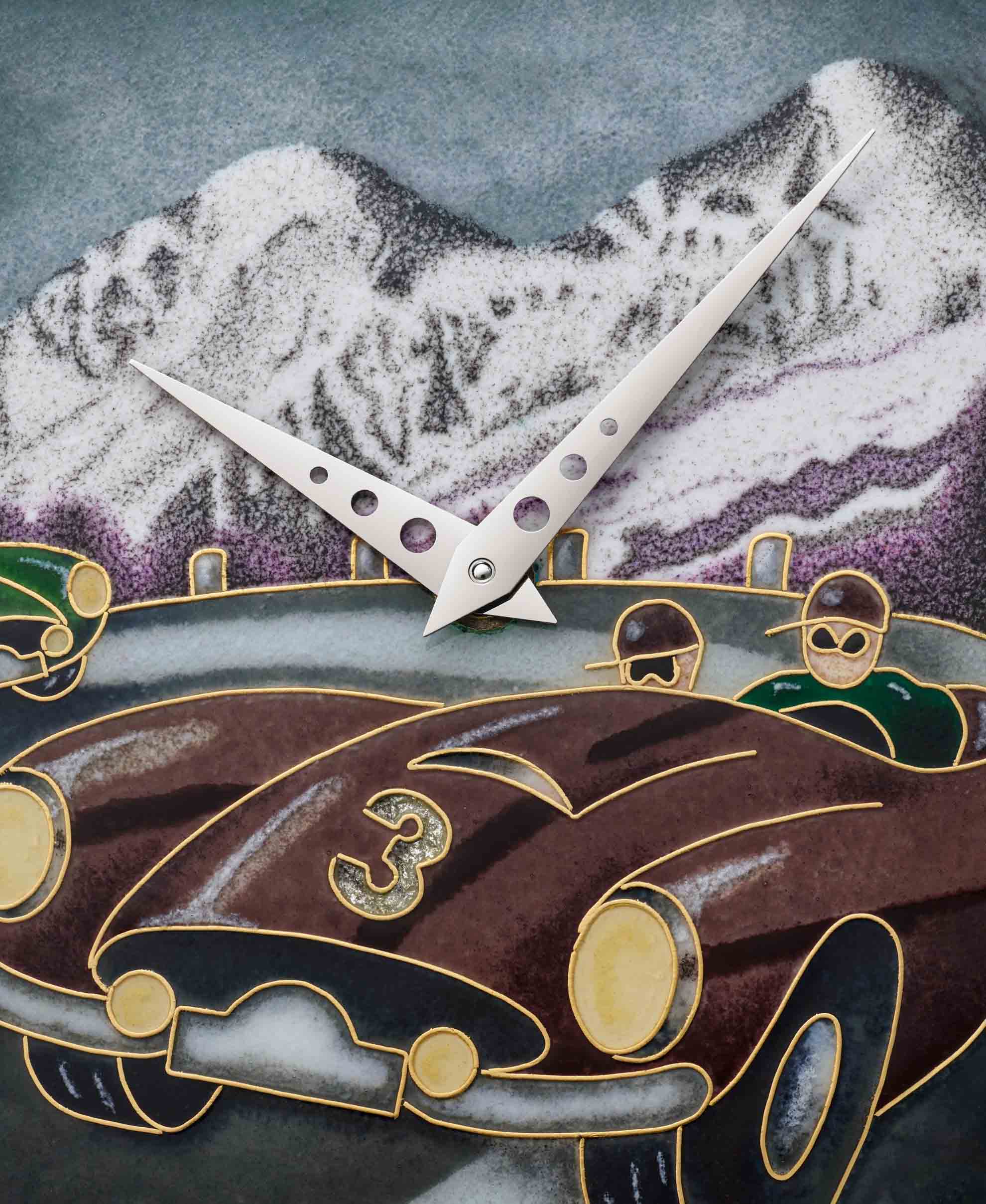
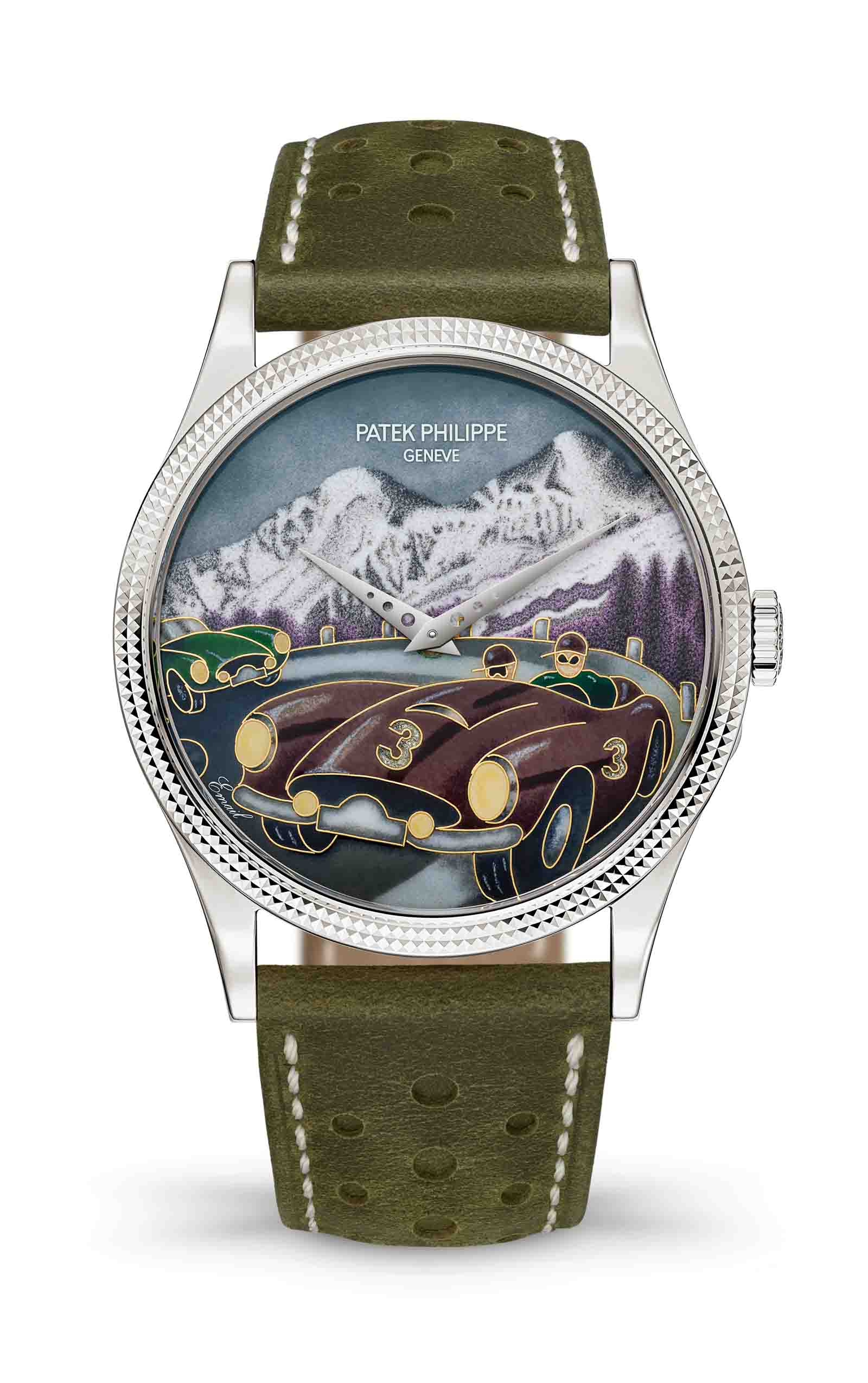
5538G-018 and 7000/50G-012 “Jungle in Bengal” / Calatrava minute-repeater wristwatches with dials in miniature painting on enamel
An enchanted voyage in the world of Ananbô
The decors of these two unique pieces reflect all the splendor and originality of the celebrated panoramic wallpapers produced by the French family firm Ananbô, inspired by their creator’s own travels.
To give life to these scenes filled with a myriad details, Patek Philippe chose the exacting technique of miniature painting on enamel. The artist built up his picture in small deft touches using 12 colors, including 9 blends, creating a contrast between the jungle, depicted in monochrome shades, and the elephant with its passengers, portrayed in vivid colors. He then protected the decoration and intensified its brilliance with several coats of flux, a transparent enamel, according to the Geneva method. Each dial required 22 to 23 firings at temperatures ranging from 800°C to 900°C.
Reference 5538G-018 is endowed with a caliber R TO 27 manually wound movement with minute-repeater and tourbillon, and the Reference 7000/50G-012 ladies’ model with a caliber R 27 self-winding movement with minute-repeater striking on two gongs. The movements may be admired through sapphire crystal case backs (interchangeable with solid backs in white gold).
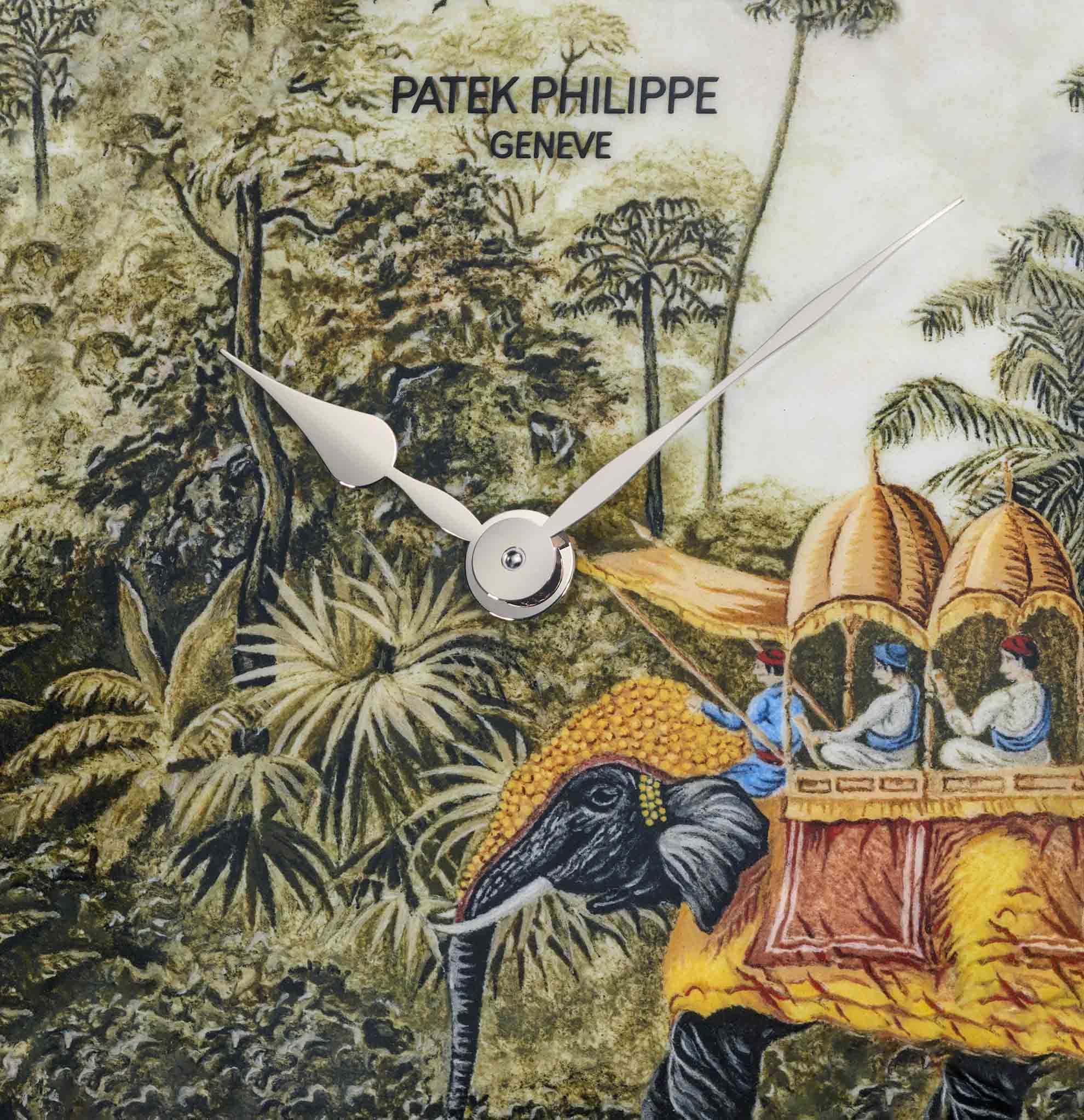
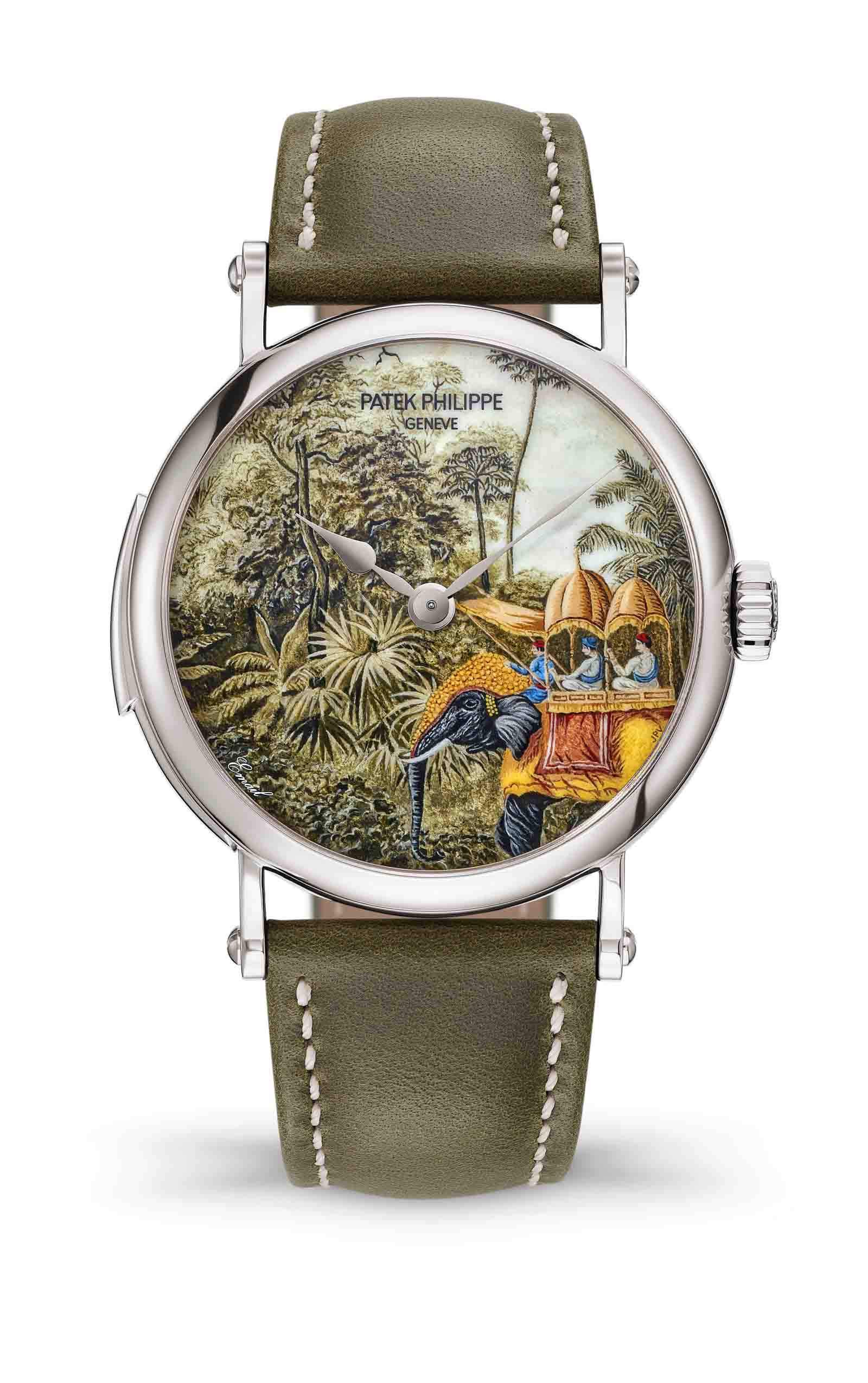
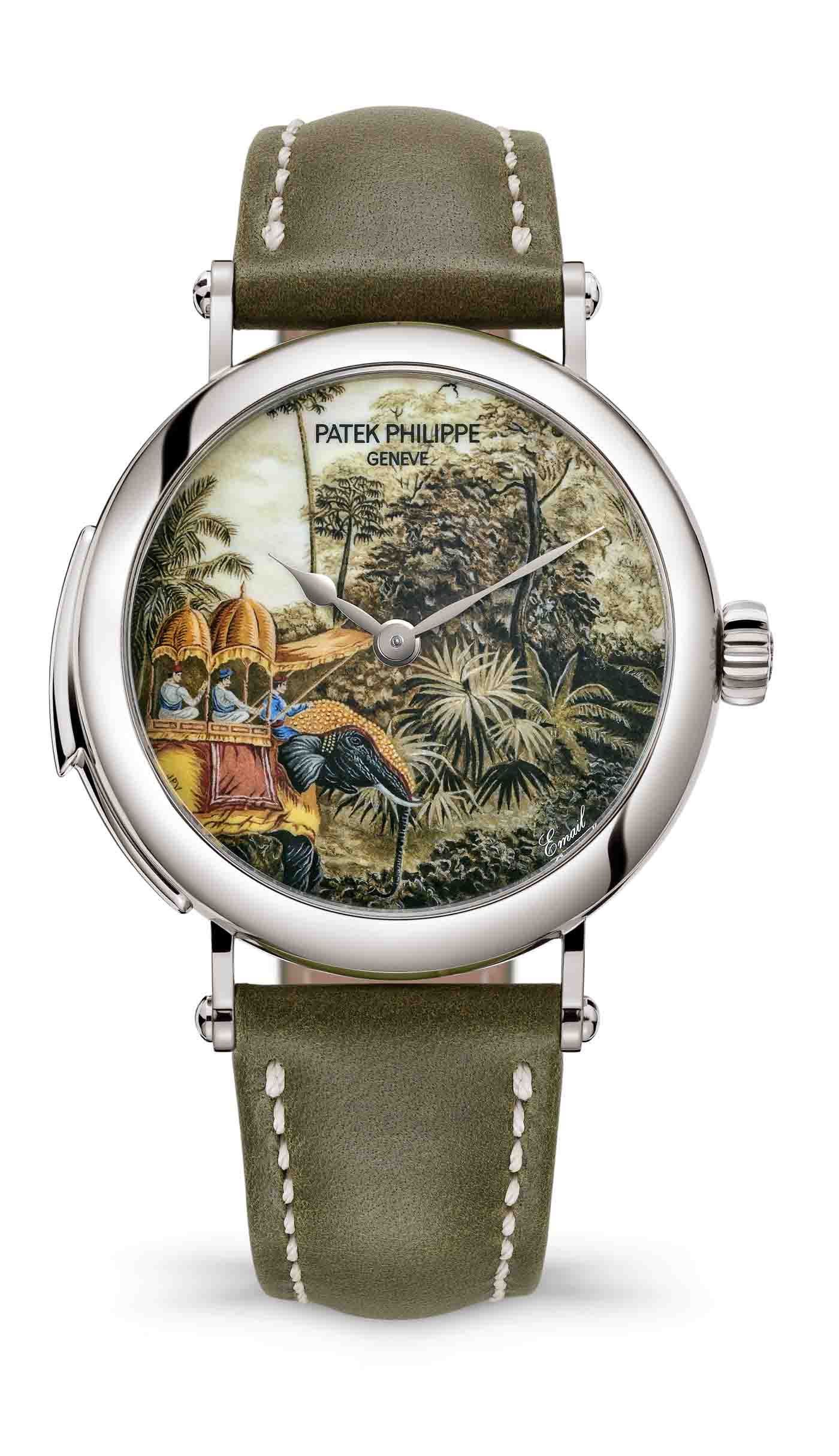
5738/50G-026 “White Egrets” / Golden Ellipse wristwatch with dial in cloisonné enamel
A Japanese Touch
The elliptical bezel of this limited edition of six watches forms a striking frame for this decoration in Grand Feu cloisonné enamel after a famous Japanese print from the 1920s. In reproducing this group of white egrets in the snow, the enameller has succeeded in rendering all the delicacy and serenity of the original work — and with astonishing warmth, despite the wintry theme.
Creating the contours of the wading birds called for some 50 cm of gold wire (~0.2 g) measuring 0.05 x 0.4 mm in cross-section, cut into tiny segments and shaped by hand. Color was introduced with a palette of translucent, opaque and opalescent enamels in some 20 shades, combined in a manner requiring exceptional finesse. Each dial underwent about 15 firings at a temperature of more than 800°C.
The white-gold case, whose harmonious proportions were inspired by the ancient golden section, houses a caliber 240 ultra-thin self-winding movement, with hours and minutes displayed by cheveu-style hands in white gold.
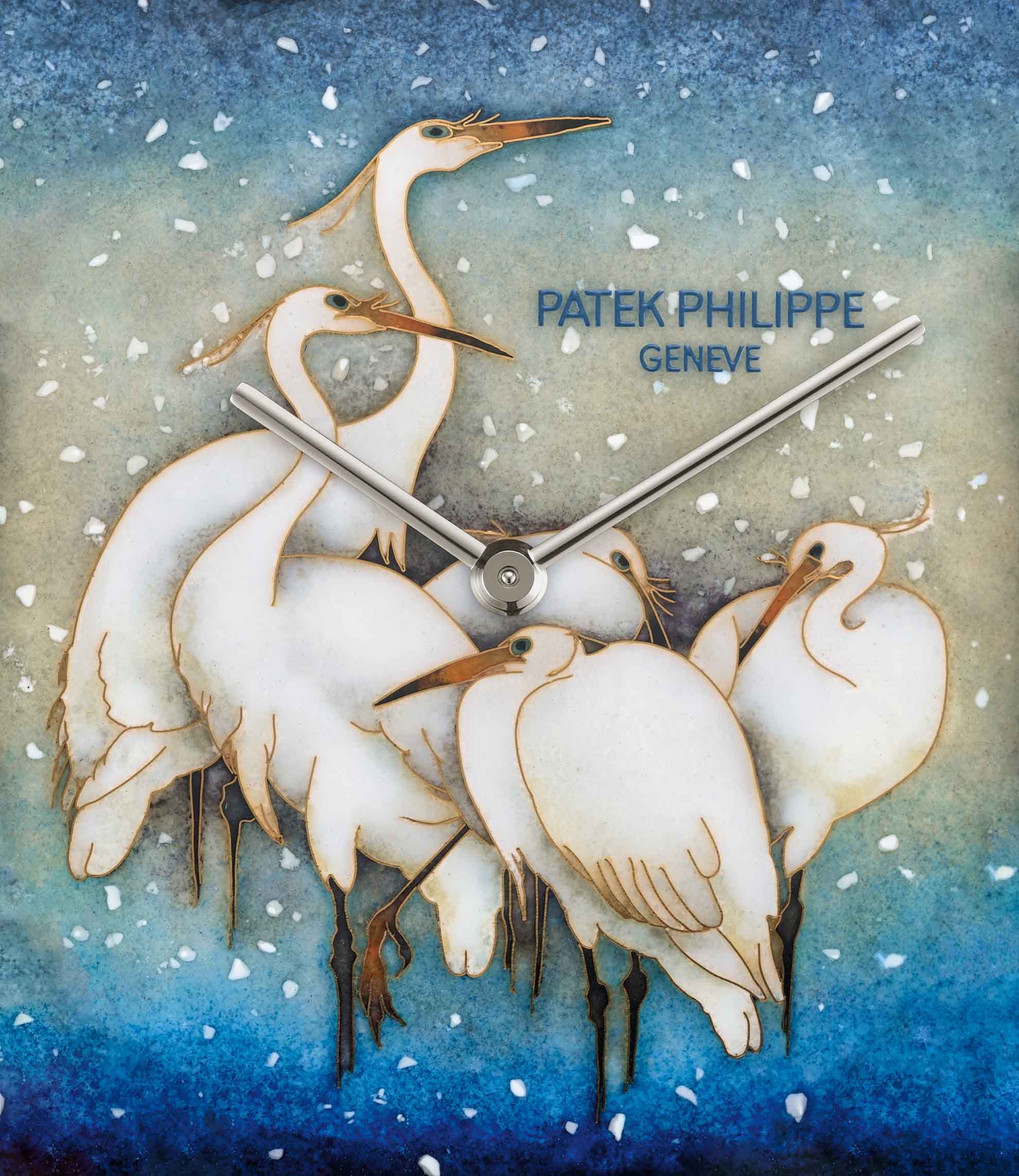
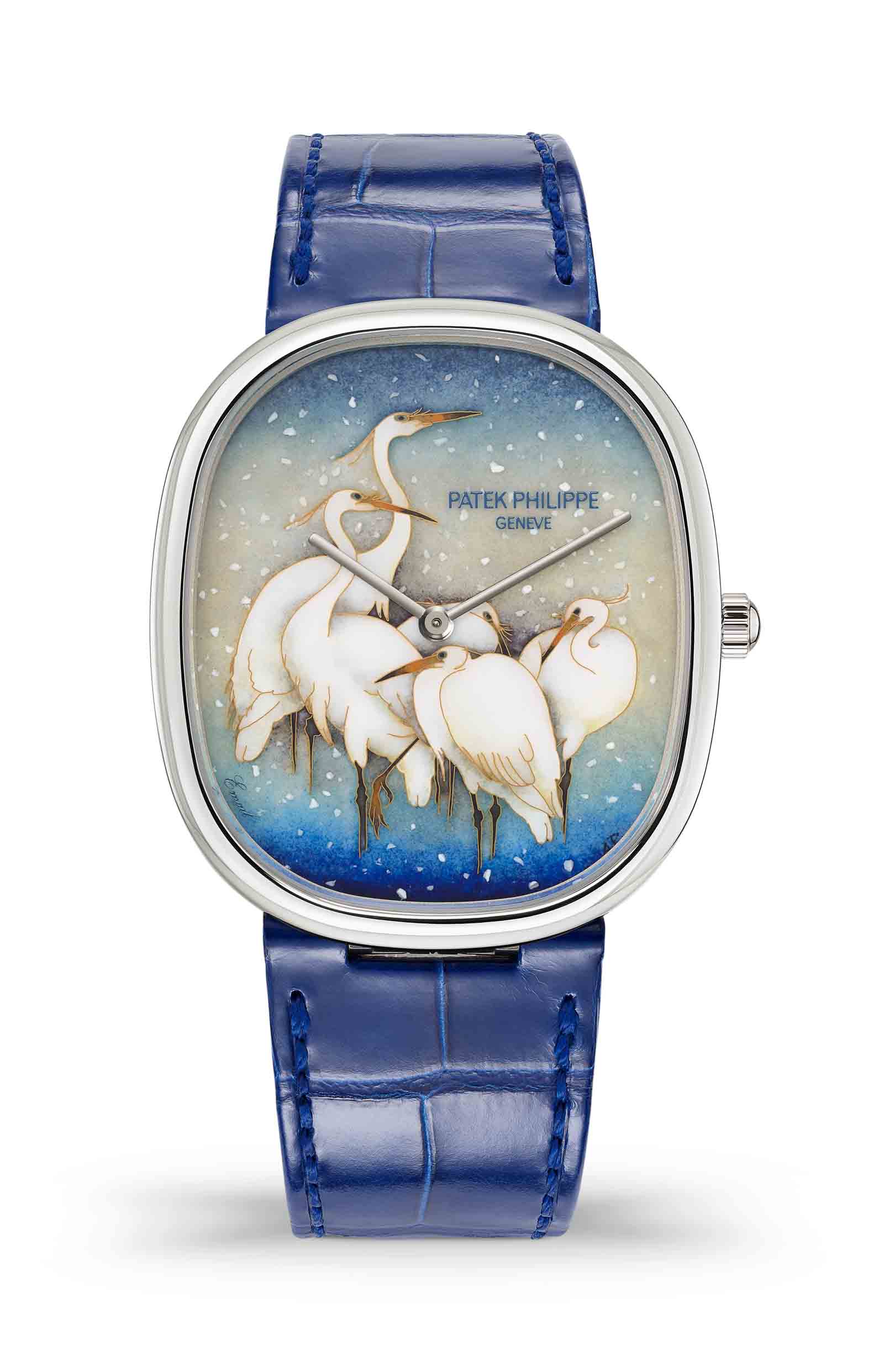
20149M-001 “Racing Cars” / Dome table clock in cloisonné enamel
Exceptional motors
This unique piece in Grand Feu cloisonné enamel conjures up all the excitement and panache of motor racing in the 1940s to 1960s, with typical sports cars of that period roaring up and down mountain roads.
To create all the contours of the cars and the outlines of the figures and landscape, the enameller used about 8.17 m of gold wire (~16.35 g) measuring 0.2 x 0.6 mm in cross-section. He then introduced a lavish palette of 71 enamel colors, mainly translucent, but with some opaque or opalescent. Each enameled plate required from 8 to 12 firings at temperatures ranging from 890°C to 900ºC.
The highly original hour circle, resembling a steering wheel, was crafted from amboyna burl and has 12 hour markers. The pierced rhodium-plated hands also evoke the racing world. The dashboard with its fictive instruments was rhodium plated and engine turned recalling the interiors of classic cars. A glimpse of a seat sheathed in genuine leather completes the motoring ambience.
This piece is powered by the caliber 17’’’ PEND mechanical movement rewound by an electric motor.
